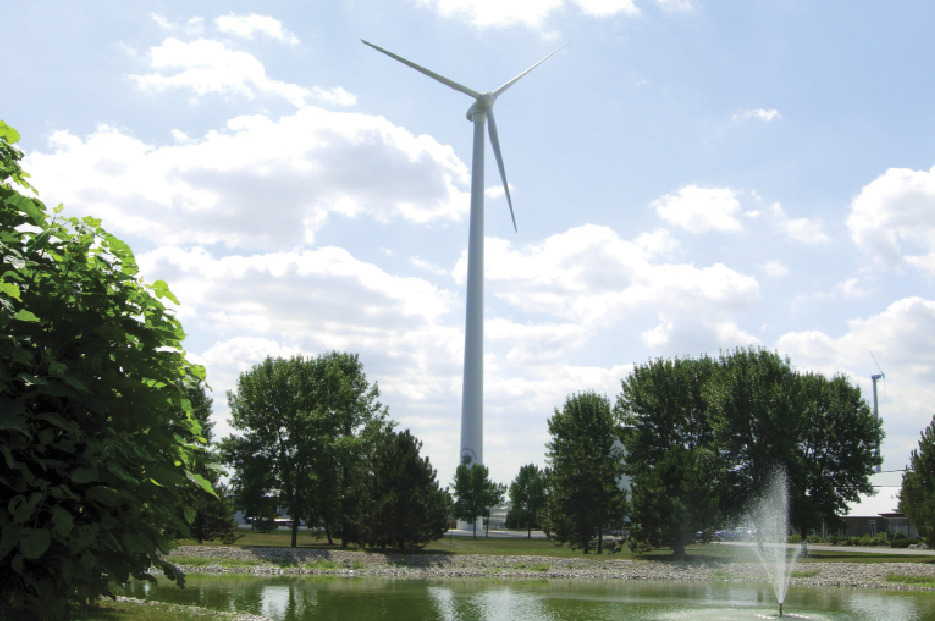
Love them or hate them, wind turbines are definitely gaining traction in the renewable energy market
In continuing our discussion regarding renewable energy options, this month’s topic is wind power. There are few technologies that attract as many positive and negative opinions as man’s attempt to harness the power of the wind to produce electricity.
 |
| Wind turbines don’t pollute or consume non-renewable fuels. |
In continuing our discussion regarding renewable energy options, this month’s topic is wind power. There are few technologies that attract as many positive and negative opinions as man’s attempt to harness the power of the wind to produce electricity.
It used to be that when we thought of wind power, the image of a bucolic rural setting with a lovely little windmill gently turning in the breeze would come to mind. Those days are gone. That image has been replaced by one of enormous steel towers topped by massive blades cutting through the air at seemingly great speed.
A MAJOR LIMITATION? NO WIND, NO POWER
Detractors of wind power technology cite potential health problems, bothersome noise and vibration levels, and environmental concerns such as hazards to birds as well as the overall visual impact on the landscape. All of this and, of course, the obvious – no wind, no power. Proponents respond that wind turbines do not produce pollution or consume non-renewable fuel sources. Wind is free for everyone, they say, and decommissioning turbines leaves behind no residual cleanup as is the case with some other technologies, such as nuclear.
Love them or hate them, wind turbines are definitely gaining traction in the renewable energy marketplace. Installations range from large wind farms to single towers and the expected payback periods for those installations are just as varied because diverse site conditions produce a wide range of results.
The most productive sites produce just over 30 per cent of the wind turbines’ nameplate capacity, due to wind conditions. Ideal generating wind speeds are 10 to 20 metres per second and for every 10 metres of elevation above sea level, wind speed can increase by 20 per cent.
SOME PROVINCES PURCHASE THE POWER FOR THE GRID
In some provinces, it is possible to sell the electricity produced by the turbine to the grid under a long-term standard offer contract. For example, the proposed feed-in tariff for Ontario is $0.135/kWh for onshore and $0.190/kWh for offshore installations. If standard offer contracts are not available, then wind generation is used to reduce the amount of electricity that must be purchased. Wind is rarely used as the sole source of power due to its unpredictability and the relatively small output compared to the nameplate capacity. The most common renewable technology employed to augment wind generation in these circumstances is solar. Wind power is also used in combination with generation from fossil fuels.
As with any renewable project, there’s a lot of legwork required prior to implementing wind power. Critical to success is finding a suitable site away from structures or geological features that might impede the wind flow. Once that is determined, it is necessary to ascertain the wind capacity in the area in order to assess the viability of the project and the correct sizing of the tower. And then there are the permits. Depending upon where you are located, there could be multiple governmental bodies regulating each specific criterion that must be met before proceeding. Often requirements differ depending upon the output and type of wind turbine.
Small use horizontal axis turbines are usually considered to be from one to 300 kW, with larger ones, generally located on wind farms, being between one and two MW. The maximum size of an individual turbine is seven MW. Small use vertical axis turbines produce up to 10 kW and larger units up to 200 kW.
Wind turbine blades can be attached directly to a generator (direct drive) or have a gearbox between the blades and the generator. Upwind turbines operate with the wind hitting the blades before they hit the tower while downwind turbines have the wind hitting the tower before they strike the blades. Vertical axis turbines generally operate at a lower noise level then horizontal axis turbines.
With the continuing push to enact “green” legislation and with the possibility of generous rebates or incentives, this is a technology worth investigating.
We like renewable technologies because of their positive impact on the earth, but remember, do your homework before you buy and be a good neighbour!
In the next issue we will switch gears a little and discuss retail markets for natural gas and electricity. We’ll guide you through the offers that cross your door and some resources to help you with decision making.
Chris Hanlon is the Director of Energy Services for Ag Energy
Co-operative and is an engineer with over 25 years’ energy management experience. He can be contacted at chanlon@agenergyservices.ca.
Print this page